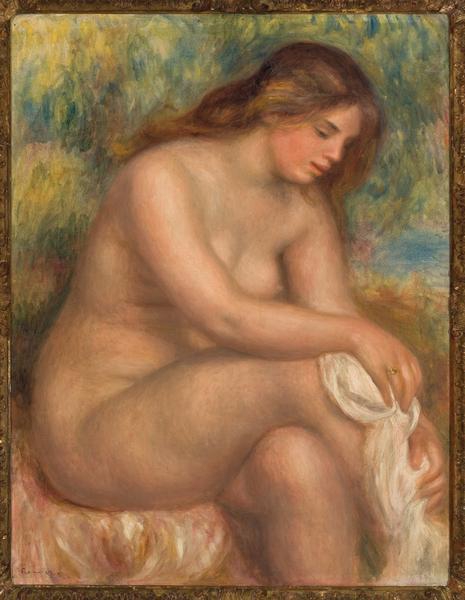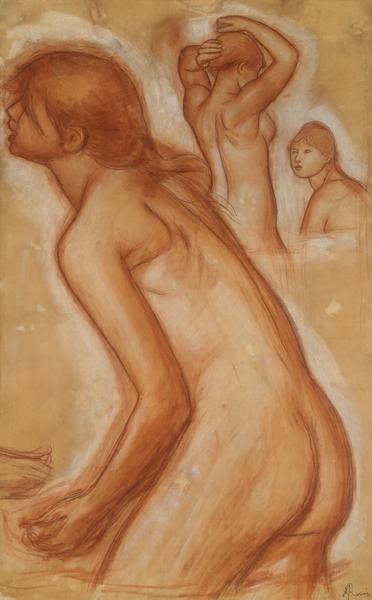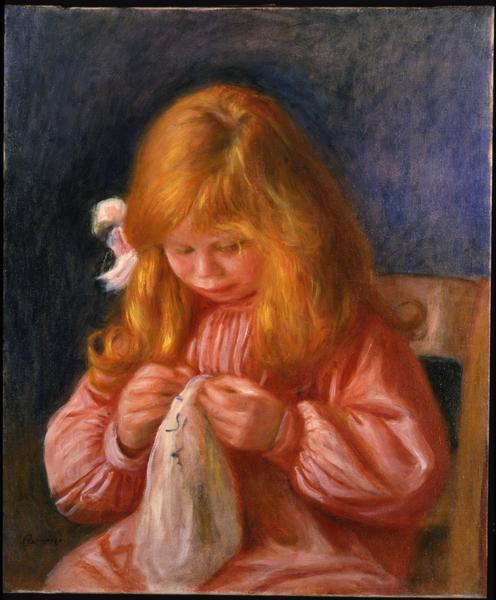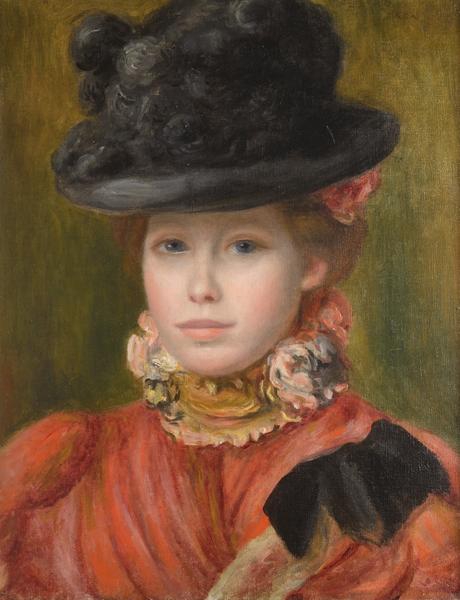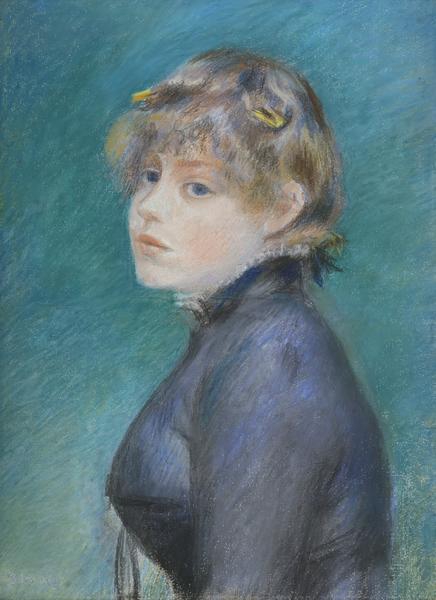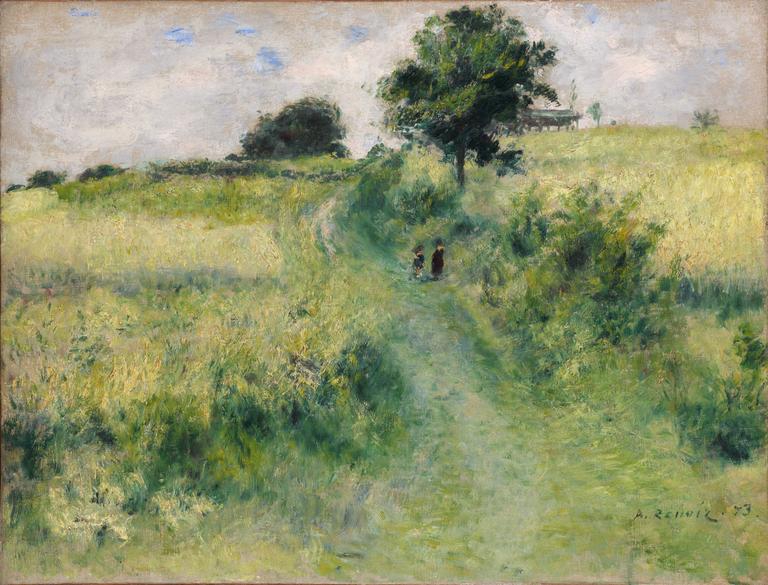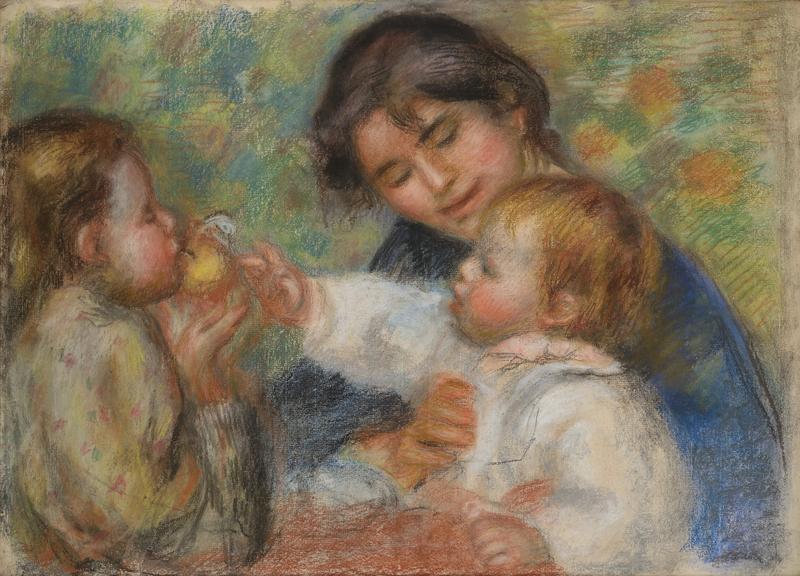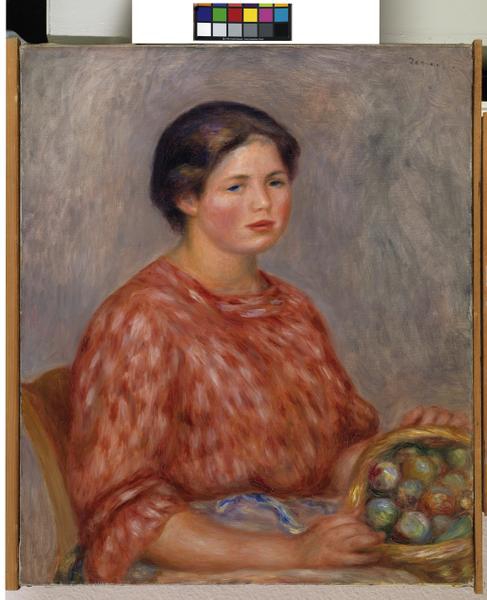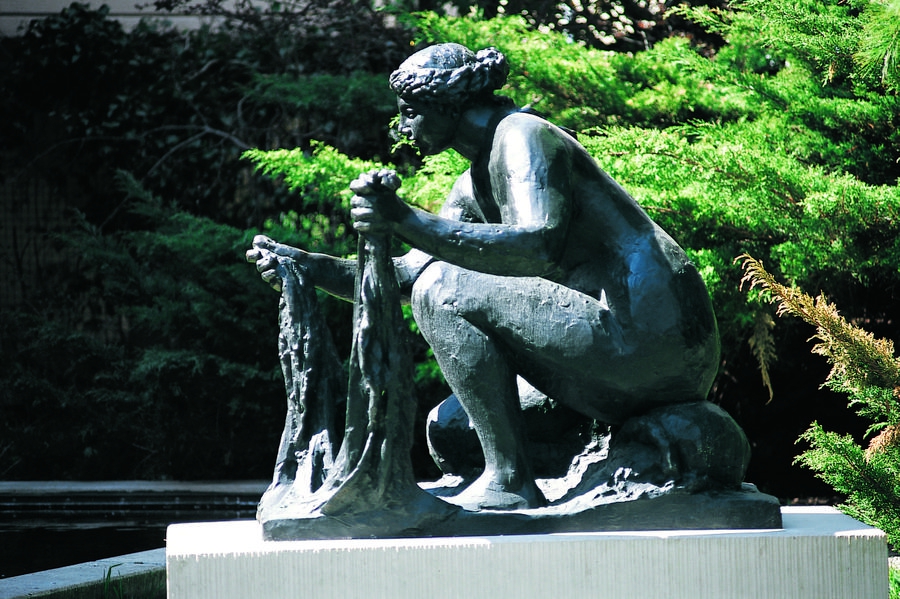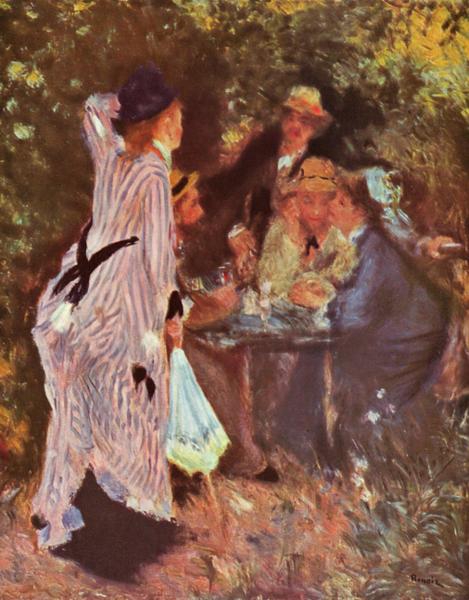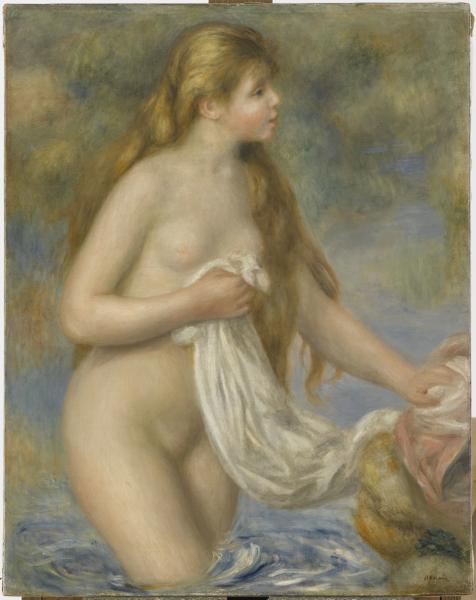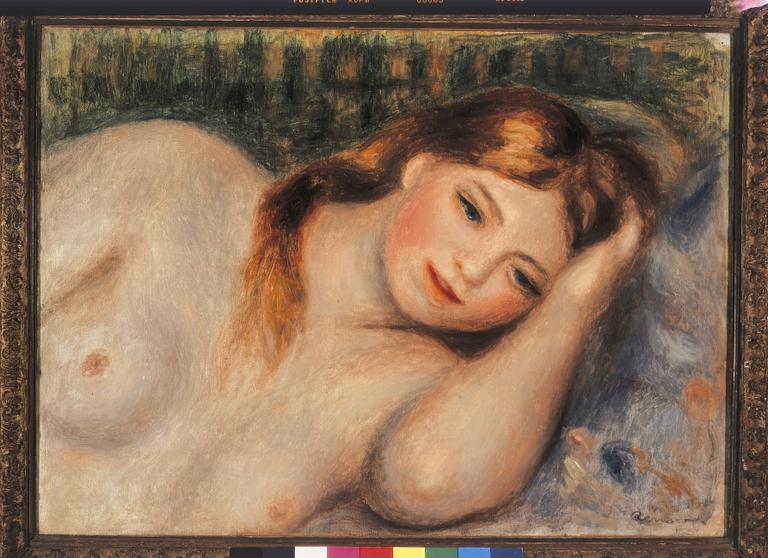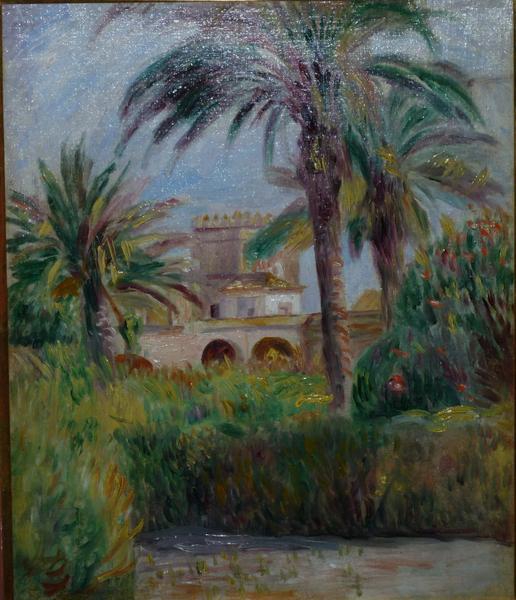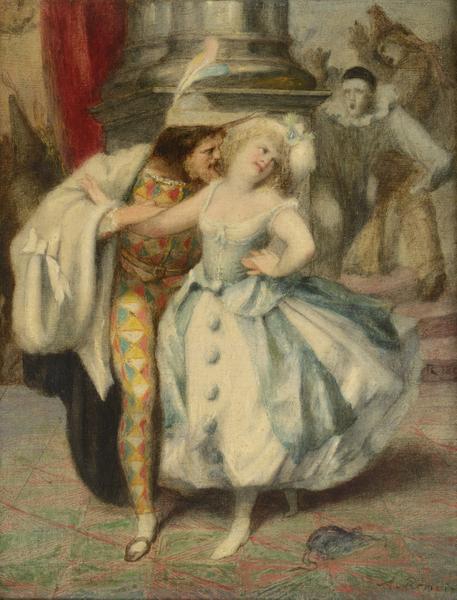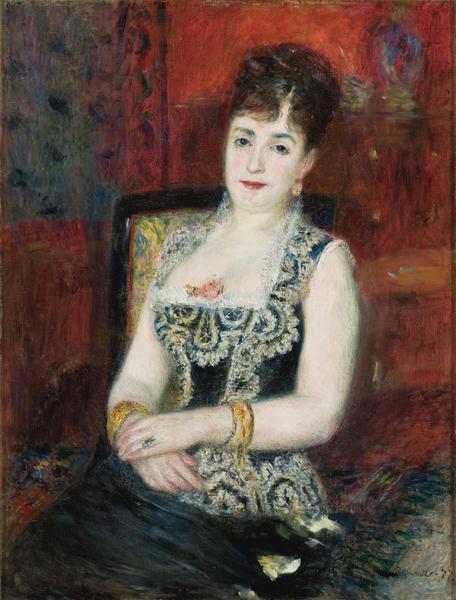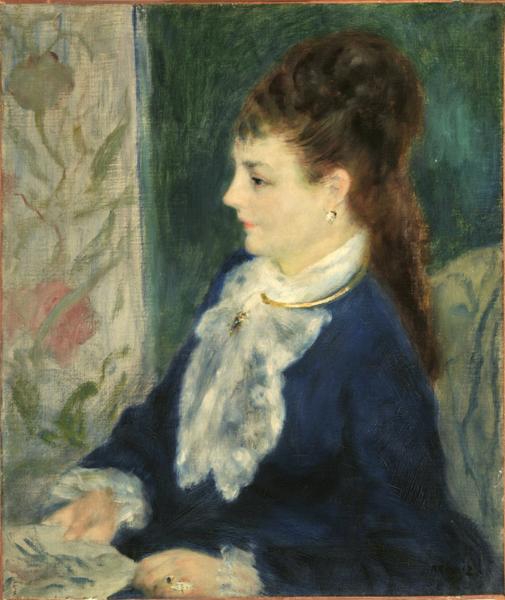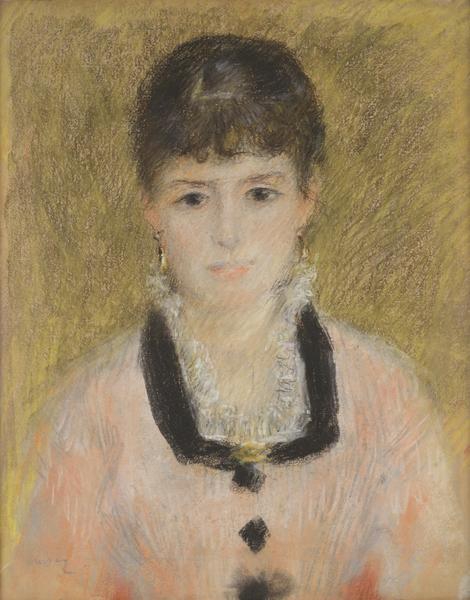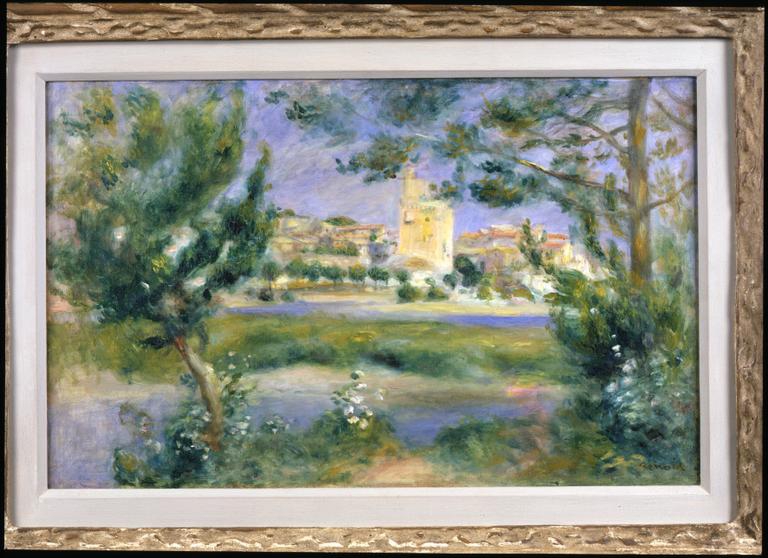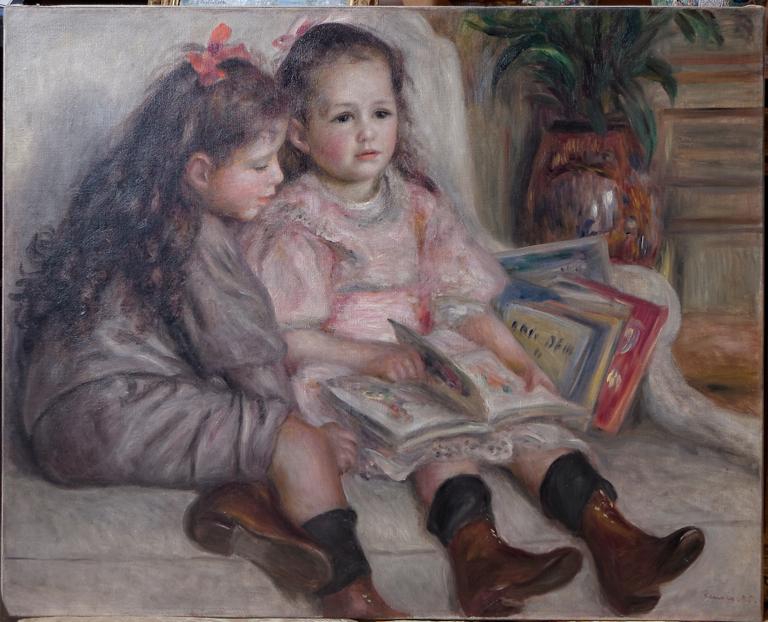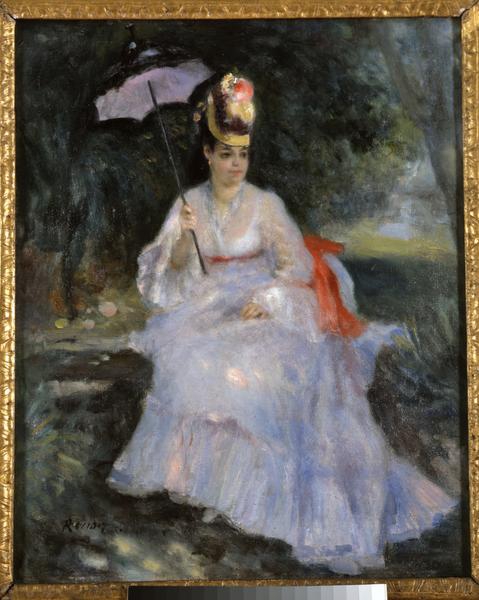RENOIR Another look at Renoir / Fondation Pierre Gianadda, Martigny (Swiss) 2014
RENOIR
Another look at Renoir
Fondation Pierre Gianadda, Martigny
20 june - 23 november 2014 !
Following the various historical retrospectives on the masters of Impressionism that the Fondation Pierre Gianadda has been organising for the last twenty years: Degas (1993), Gauguin (1998), Van Gogh (2000), followed by Berthe Morisot (2002) and Monet (2011), it is appropriate to pay tribute this time round to the most famous portrait painter of the time – Pierre-Auguste Renoir (1841-1919).
This summer’s exhibition proposes a new approach to Renoir’s work (Another look at Renoir), with over a hundred works that testify to the sixty creative years of his career and to the appreciable diversity of his inspiration. This illuminating chronological panorama best reflects the artist’s voluntarily intimist temperament in the great series that punctuate his work; this is an artist who has mastered both landscape painting and the eternal feminine, family scenes and still life. A majority of unfamiliar and very rarely lent works from private collections, as well as numerous
loans from the great international museums (Pushkin Museum, São Paulo Museum of Art, Thyssen-Bornemisza Museum, Royal Palace of Monaco),museums in France (Musée Rodin, Musée d’Orsay, Orangerie, Petit Palais and Marmottan, Paris – Le Havre, Rouen, Ephrussi de Rothschild Foundation/Académie des Beaux-Arts, Saint-Jean Cap Ferrat) as well as institutions in Switzerland (Geneva, Basle, Bern, Lausanne, Winterthur, Bührle Foundation and Kunsthaus, Zurich …) furnish an opportunity to renew our vision of Renoir’s seminal work at the heart of French Impressionism. Two rarely exhibited sculptures (Vénus Victrix, from the Petit Palais, Paris, and La Grande Laveuse accroupie – The Washerwoman – from the Fondation Pierre Gianadda) complete the exhibition.
For the catalogue accompanying the exhibition some dozen specialists – art historians and family witnesses – have been called on to deal with subjects as varied and novel as Renoir’s friendships with writers (by Sylvie Patry, head curator at the Musée d’Orsay), his brother Edmond Renoir (by Marc Le Coeur), the artist Caillebotte (by Pierre Wittmer), the art dealer Paul Durand-Ruel (by Caroline Godfroy Durand-Ruel), the artist Albert André (by Flavie Mouraux Durand-Ruel), or Pablo Picasso’s admiration for Renoir (by Augustin de Butler) … In a more museum-oriented approach, Daniel Marchesseau proposes an analysis to supplement his notes, while Lukas Gloor describes how Renoir’s work was received in Swiss collections in the 20th century, and Cécile Bertran, curator of the Musée Renoir, casts light on the artist’s family life in his property of Les Collettes with the help of the many photographs acquired by the town of Cagnes-sur-Mer in the autumn of 2013.
This selection will certainly captivate a wide-ranging public who will rediscover some of the most famous points of reference but also encounter many unfamiliar or even completely unknown paintings from private collections in Europe. The visitor will no doubt experience a Proustian access of emotion stemming from so many well-loved images of grace and sensuality preserved in the collective memory of the most carnal of the Impressionists, the lover of the eternal feminine.
As a talented student of the Swiss painter Charles Gleyre, in whose studio he forged his bonds with the Paris Ecole de Beaux-Arts along with his comrades Claude Monet and Frédéric Bazille, Renoir soon defined his realm of female inspiration with Lisa (1872) followed by the voluptuous Suzanne Valadon who would pose in Rue Cortot, before following the advice of Degas and becoming the famous painter exhibited by the Fondation Pierre Gianadda in 1996.
It was also in Rue Cortot that Renoir would paint In the Garden of Moulin de la Galette and it was here that this artist who excelled in celebrating female beauty – just as Monet excelled in celebrating the most ephemeral variations of light – would dominate both as a portrait painter and as a landscape painter before undertaking numerous commissions for the wealthy bourgeoisie of Paris (the Countess Edmond de Pourtalès, or Alice and Elisabeth Cahen d’Anvers).
His encounter with Aline Charigot, the mother of his three sons, Pierre, Jean and Claude (known as “Coco”), whom he married in 1890, was a defining factor for his inspiration. As the years went by she acquired a new focus in a sensual evocation of Motherhood. But it was naturally in the numerous variations of his Nudes that he stood out in the eyes of the knowledgeable public. While also appreciated for his still lifes, his flower bouquets and his landscapes, he demonstrated consummate skill in using the whole range of his palette in his painting technique which at the height of his genius would illuminate moments of joy with a light of its own.
Renoir worked with sable and soft-bristled paintbrushes and, in his own words, essentially used “White lead, chrome yellow, Naples yellow, yellow ochre, natural Sienna pigment, vermilion, rose madder, Veronese green, emerald green, cobalt blue, ultramarine blue – yellow ochre, Naples yellow and Sienna pigment being only intermediate tints that are not needed because they can be made with the other colours” – not forgetting “black, the queen of colours”.
Paul Durand-Ruel was the first to champion him and exhibit his work, in Paris, London and the United States. More than a thousand works by Renoir passed through his galleries. Ambroise Vollard, who was younger, published his engravings and his bronzes, and on his death acquired all the contents of his studio. Renoir made three famous portraits of him, including the one Vollard donated to the Petit Palais in Paris. As he became established as an artist financial success arrived with the turn of the century. Renoir, who now also had the support of the Bernheim-Jeune brothers, discovered Cagnes-sur-Mer in 1903 and settled shortly after in the huge Domaine des Collettes where he would continue painting until the end of his life, his passion for the finest of professions inextinguishable.
At the height of his fame, despite some acid criticism, collectors as knowledgeable as Paul Galimard, Gaston Lévy, Henri Bernstein or the Americans Leo and Gertrude Stein, were very clear about his importance and surrounded themselves with his works. This was before the celebrated Dr. Alfred Barnes collected over a hundred and eighty paintings in his property of Merion, south of Philadelphia, on the particular advice of the young art dealers Paul Guillaume and René Gimpel, and later Paul Rosenberg (the Barnes Foundation has been permanently based in Philadelphia since 2012). During Renoir’s mature years, young artists like Aristide Maillol and Maurice Denis visited him and painted his portrait. Some months before he died, it was the turn of Amedeo Modigliani and Henri Matisse, also encouraged by Paul Guillaume, to visit Les Collettes … Although Pablo Picasso never had the opportunity of meeting Renoir, he nevertheless acquired seven of his works for his personal collection (today in the Picasso Museum, Paris), illustrating the innovative importance he attached to his art in his mature period.
This exhibition, endowed with some hundred works, will enable visitors to rediscover in the majestic setting of the Fondation Pierre Gianadda a Renoir resolutely an artist of his time.
Exhibition Curator : Daniel Marchesseau, Conservateur général honoraire du Patrimoine.
Copyright Fondation Pierre Gianadda , Martigny
Another look at Renoir
Fondation Pierre Gianadda, Martigny
20 june - 23 november 2014 !
Following the various historical retrospectives on the masters of Impressionism that the Fondation Pierre Gianadda has been organising for the last twenty years: Degas (1993), Gauguin (1998), Van Gogh (2000), followed by Berthe Morisot (2002) and Monet (2011), it is appropriate to pay tribute this time round to the most famous portrait painter of the time – Pierre-Auguste Renoir (1841-1919).
This summer’s exhibition proposes a new approach to Renoir’s work (Another look at Renoir), with over a hundred works that testify to the sixty creative years of his career and to the appreciable diversity of his inspiration. This illuminating chronological panorama best reflects the artist’s voluntarily intimist temperament in the great series that punctuate his work; this is an artist who has mastered both landscape painting and the eternal feminine, family scenes and still life. A majority of unfamiliar and very rarely lent works from private collections, as well as numerous
loans from the great international museums (Pushkin Museum, São Paulo Museum of Art, Thyssen-Bornemisza Museum, Royal Palace of Monaco),museums in France (Musée Rodin, Musée d’Orsay, Orangerie, Petit Palais and Marmottan, Paris – Le Havre, Rouen, Ephrussi de Rothschild Foundation/Académie des Beaux-Arts, Saint-Jean Cap Ferrat) as well as institutions in Switzerland (Geneva, Basle, Bern, Lausanne, Winterthur, Bührle Foundation and Kunsthaus, Zurich …) furnish an opportunity to renew our vision of Renoir’s seminal work at the heart of French Impressionism. Two rarely exhibited sculptures (Vénus Victrix, from the Petit Palais, Paris, and La Grande Laveuse accroupie – The Washerwoman – from the Fondation Pierre Gianadda) complete the exhibition.
For the catalogue accompanying the exhibition some dozen specialists – art historians and family witnesses – have been called on to deal with subjects as varied and novel as Renoir’s friendships with writers (by Sylvie Patry, head curator at the Musée d’Orsay), his brother Edmond Renoir (by Marc Le Coeur), the artist Caillebotte (by Pierre Wittmer), the art dealer Paul Durand-Ruel (by Caroline Godfroy Durand-Ruel), the artist Albert André (by Flavie Mouraux Durand-Ruel), or Pablo Picasso’s admiration for Renoir (by Augustin de Butler) … In a more museum-oriented approach, Daniel Marchesseau proposes an analysis to supplement his notes, while Lukas Gloor describes how Renoir’s work was received in Swiss collections in the 20th century, and Cécile Bertran, curator of the Musée Renoir, casts light on the artist’s family life in his property of Les Collettes with the help of the many photographs acquired by the town of Cagnes-sur-Mer in the autumn of 2013.
This selection will certainly captivate a wide-ranging public who will rediscover some of the most famous points of reference but also encounter many unfamiliar or even completely unknown paintings from private collections in Europe. The visitor will no doubt experience a Proustian access of emotion stemming from so many well-loved images of grace and sensuality preserved in the collective memory of the most carnal of the Impressionists, the lover of the eternal feminine.
As a talented student of the Swiss painter Charles Gleyre, in whose studio he forged his bonds with the Paris Ecole de Beaux-Arts along with his comrades Claude Monet and Frédéric Bazille, Renoir soon defined his realm of female inspiration with Lisa (1872) followed by the voluptuous Suzanne Valadon who would pose in Rue Cortot, before following the advice of Degas and becoming the famous painter exhibited by the Fondation Pierre Gianadda in 1996.
It was also in Rue Cortot that Renoir would paint In the Garden of Moulin de la Galette and it was here that this artist who excelled in celebrating female beauty – just as Monet excelled in celebrating the most ephemeral variations of light – would dominate both as a portrait painter and as a landscape painter before undertaking numerous commissions for the wealthy bourgeoisie of Paris (the Countess Edmond de Pourtalès, or Alice and Elisabeth Cahen d’Anvers).
His encounter with Aline Charigot, the mother of his three sons, Pierre, Jean and Claude (known as “Coco”), whom he married in 1890, was a defining factor for his inspiration. As the years went by she acquired a new focus in a sensual evocation of Motherhood. But it was naturally in the numerous variations of his Nudes that he stood out in the eyes of the knowledgeable public. While also appreciated for his still lifes, his flower bouquets and his landscapes, he demonstrated consummate skill in using the whole range of his palette in his painting technique which at the height of his genius would illuminate moments of joy with a light of its own.
Renoir worked with sable and soft-bristled paintbrushes and, in his own words, essentially used “White lead, chrome yellow, Naples yellow, yellow ochre, natural Sienna pigment, vermilion, rose madder, Veronese green, emerald green, cobalt blue, ultramarine blue – yellow ochre, Naples yellow and Sienna pigment being only intermediate tints that are not needed because they can be made with the other colours” – not forgetting “black, the queen of colours”.
Paul Durand-Ruel was the first to champion him and exhibit his work, in Paris, London and the United States. More than a thousand works by Renoir passed through his galleries. Ambroise Vollard, who was younger, published his engravings and his bronzes, and on his death acquired all the contents of his studio. Renoir made three famous portraits of him, including the one Vollard donated to the Petit Palais in Paris. As he became established as an artist financial success arrived with the turn of the century. Renoir, who now also had the support of the Bernheim-Jeune brothers, discovered Cagnes-sur-Mer in 1903 and settled shortly after in the huge Domaine des Collettes where he would continue painting until the end of his life, his passion for the finest of professions inextinguishable.
At the height of his fame, despite some acid criticism, collectors as knowledgeable as Paul Galimard, Gaston Lévy, Henri Bernstein or the Americans Leo and Gertrude Stein, were very clear about his importance and surrounded themselves with his works. This was before the celebrated Dr. Alfred Barnes collected over a hundred and eighty paintings in his property of Merion, south of Philadelphia, on the particular advice of the young art dealers Paul Guillaume and René Gimpel, and later Paul Rosenberg (the Barnes Foundation has been permanently based in Philadelphia since 2012). During Renoir’s mature years, young artists like Aristide Maillol and Maurice Denis visited him and painted his portrait. Some months before he died, it was the turn of Amedeo Modigliani and Henri Matisse, also encouraged by Paul Guillaume, to visit Les Collettes … Although Pablo Picasso never had the opportunity of meeting Renoir, he nevertheless acquired seven of his works for his personal collection (today in the Picasso Museum, Paris), illustrating the innovative importance he attached to his art in his mature period.
This exhibition, endowed with some hundred works, will enable visitors to rediscover in the majestic setting of the Fondation Pierre Gianadda a Renoir resolutely an artist of his time.
Exhibition Curator : Daniel Marchesseau, Conservateur général honoraire du Patrimoine.
Copyright Fondation Pierre Gianadda , Martigny
